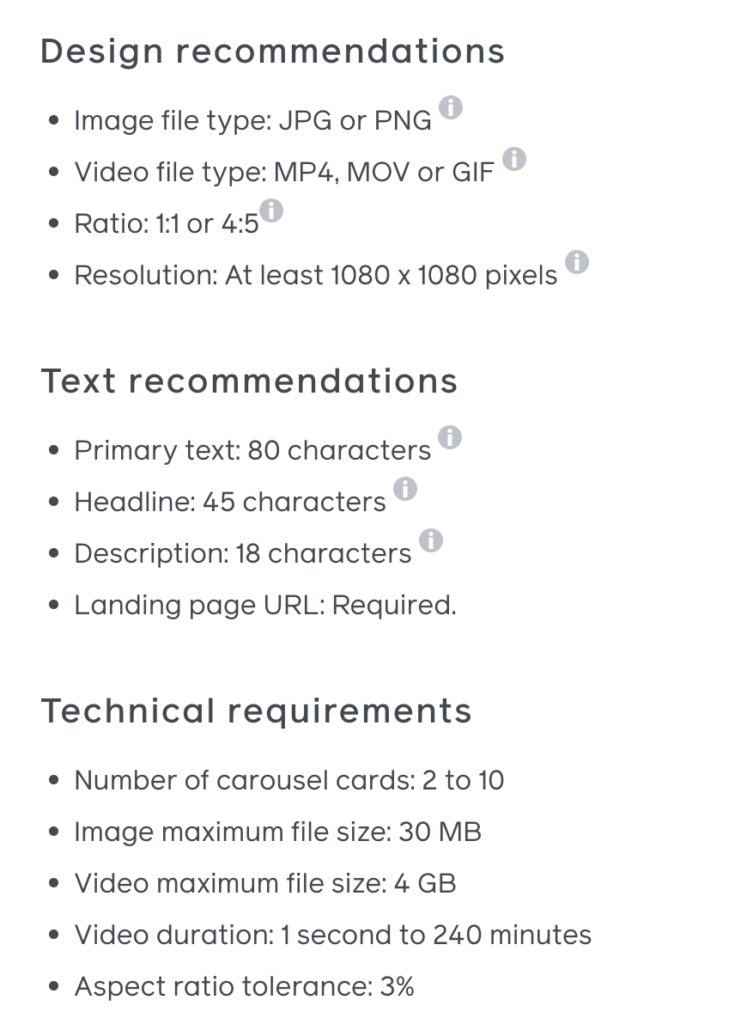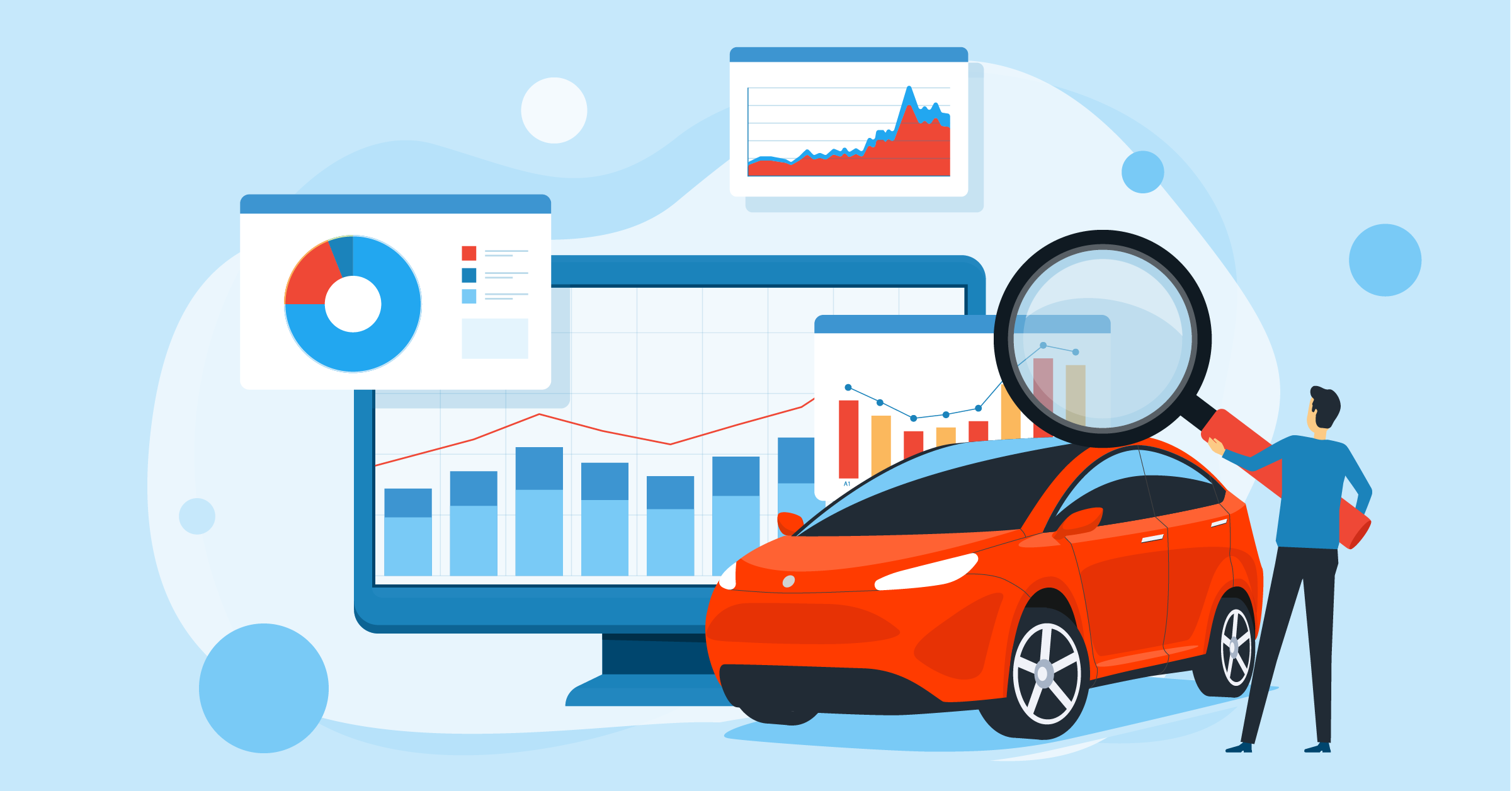
Advertising on social media can feel like a waste of time if you don’t plan it well. But with an effective strategy in place, Meta ads can help your brand reach the right people.
The ad options on platforms such as Facebook and Instagram are powerful tools for marketers looking to reach a wide audience. Nevertheless, you’ll need to follow best practices tailored to Meta technologies.
- What are Meta ads?
- Top 11 Meta ads best practices for 2026
- 1. Meta ad copy best practices
- 2. Meta ads creative best practices
- 3. Meta ads best practices for lead generation
- 4. Meta video ads best practices
- 5. Meta ads A/B testing best practices
- 6. Using Meta’s Advantage+ tools and automation
- 7. Optimizing for mobile and vertical formats
- 8. Keeping up with trends
- 9. Carousel ads best practices
- 10. Meta ads campaign optimization best practices
- 11. Best Meta ad practices for increasing return on ad spend
- 12. Using automation to optimize your advertising
- Final thoughts
This guide will walk you through the top Meta ads best practices for 2026. In addition, you’ll learn how to hit your target using standard practices, native tools, and third-party solutions like automated data bridges.
What are Meta ads?
Meta ads are advertisements that can be placed on Facebook, Instagram, Messenger, and Audience Network. The platform lets you choose a variety of formats to build the perfect ad for your offering, including image ads, video ads, carousel ads, and more.
Needless to say, these user-centric ads are highly customizable in terms of creatives, placements, and even targeting options. You can basically target users based on their demographics, behaviors, interests, and your own CRM data.
Top 11 Meta ads best practices for 2026
Meta can help your content reach the right audience, but that alone won’t keep their attention. To make an impression, your ad needs to stand out.
Use these Meta ads best practices to keep your audience engaged and interested in what you have to say.
1. Meta ad copy best practices
Having compelling ad copy is a must. It can capture your audience’s attention and even prompt an action, aka conversion.
Here’s what your Meta ad copy should have:
Keep it brief
People skim Facebook and Instagram content in well under two seconds, so your message has to land fast.
With these short attention spans, ads must have a message that’s clear and concise. What’s a good length, you ask? Aim for 125 characters or fewer.
Sell your idea
Focusing on the benefits of your product or service is key, not just the features. Explain how it solves a problem or improves the user’s life.
Use a strong call-to-action (CTA)
For an ad to actually work, users need to take action. A clear and compelling CTA can help you do that. Use CTAs that are available for the specific Meta ad objective you are using, and make sure they closely match your offering.
Personalize your message
76% of customers said that personalized messages made them more likely to consider a brand. That’s why most marketers allocate approximately 40% of their budget to personalizing their digital ads.
Tailor your ad copy to speak directly to your target audience. Use language and references that resonate with them.
Test variations and see what works
Every ad campaign is somewhat unique. Besides the gold standards your ad should uphold, experimenting with different aspects lets you find out what performs best.
This could be your headlines, body text, CTAs, and even the written text in your ad’s image.
Test variations & see what works
Every ad campaign is somewhat unique. Besides the gold standards your ad should uphold, experimenting with different aspects lets you find out what performs best. This could be your headlines, body text, CTAs and even the written text in your ad’s image.
2. Meta ads creative best practices
The visual elements of your ads are just as important as the copy. Here are some tips for creating effective ad visuals:
Quality matters
Marketers say that original graphics like infographics and illustrations perform the best. This is perhaps because of the value they offer.
Learn how to create a high-performing Facebook ad by taking a look at these inspiring examples here.
Don’t take your branding for granted
Assuming everyone knows your brand is a common and often unconscious mistake. That’s why one of the core Meta advertising best practices is to take every opportunity to create brand awareness. For instance, use colors, fonts, and imagery that align with your brand identity.
While consistency helps build brand recognition, this practice gives your content an air of professionalism. Here’s a great example of a branded ad by Typeform:

User-generated content
User-generated content (UGC) is posted by real people showing their love for your brand. It’s now a key element in social media marketing, mostly because of its genuine feel.
You can show real customers using your products. This can add authenticity and trust to your ads (and brand).
Test, rinse, and repeat
Experimenting with different ad formats lets you find out what your audience prefers the most. This can include carousel ads, slideshow ads, collection ads, etc.
You could also test various images, videos, and design elements to optimize your ads for the best performance.
3. Meta ads best practices for lead generation
Meta lead ads do much more than just collect contact info. To make a great impression and boost conversions, pair a clear value proposition with an eye-catching image or video.
Make sure your instant form is easy to complete. Here’s what to include:
- Keep questions relevant and minimal.
- Use prefilled fields where possible.
- Include multiple-choice questions to qualify leads.
Also, make sure to take advantage of the intro section to explain what users can expect after submission, and don’t forget to customize the completion screen to guide next steps.
On the backend, sync your CRM for better targeting and use lookalike or engagement custom audiences to re-engage high-potential prospects. You can do this using automated integrations such as:
Finally, test different form lengths to find that sweet spot between quantity and quality. A strong lead ad gets attention and brings in the results you are looking for.
4. Meta video ads best practices
Video content is an all-time user favorite. Given that it’s done well, your video ad can be engaging enough to boost your ad performance. When it comes to the Meta video ads best practices, your ad should:
- Capture viewers’ attention quickly: Use movement and sound right from the start to show the unique features of your product or tell your brand’s story. Make sure your video grabs attention within the first few seconds to encourage viewers to keep watching.
- Use sound: Meta now recommends designing videos for sound on and sound off. Use music and voiceover to boost engagement, but always add captions or on-screen text so the message lands even on mute.
- Use the time you need to tell your story. Shorter videos may still hold attention better, but Meta now allows from 1 second up to 241 minutes. You’ll usually want to stay well under 15–30 seconds for placement limits.
- Use storytelling. Connect emotionally with your audience by showcasing real-life scenarios or customer testimonials. This can help viewers relate to your brand on a personal level.
- Include a CTA. Like with text ads, every video should have a clear and compelling call-to-action (CTA). This encourages viewers to take the next step, whether it’s learning more, signing up, or making a purchase.
- Also, make sure to stick to the recommended video specifications by Meta:

This ad by Liverpool John Moores University is a great example:

What makes it a good ad? It has several elements that are recommended by Meta video ads best practices:
- Clear CTA: “Learn more” prompts immediate action.
- A relevant message: Targets students with “Beat the rush of Results Day.”
- Engaging visuals: Uses a video thumbnail to capture attention.
- Quick-to-grasp info: Short, easy-to-read text.
- Timely offer: Promotes courses available at the time.
5. Meta ads A/B testing best practices
Iteration is the foundation of a strong advertising ecosystem, making A/B testing indispensable.
Pick one variable and keep ad sets identical. Then, define a measurable hypothesis, and use a clean, large enough audience with no overlap.
Run tests for at least 7 days (longer if your conversion lag is slower) and budget each variant to hit roughly 50 optimization events so it can exit learning.
It’s important that you avoid mid-test edits that reset learning. Aligning on a single primary KPI helps you use Ads Manager’s Columns, Breakdowns, and Reports with purpose so you can find out your high-performance strategy bits.
Throughout, log what you learned and keep adding to it with future tests for comparison.
6. Using Meta’s Advantage+ tools and automation
Meta’s Advantage+ tools can make your advertising easier and more effective. These tools use AI to automatically improve different parts of your campaigns, so you can get better results with less effort. Marketers also explore using an AI ad generator to quickly produce multiple ad variations that can then be optimized further with Advantage.
Advantage+ placements
With Advantage+ placements, Meta can automatically show your ads in the best spots across Facebook, Instagram, Audience Network, and Messenger. This way, your ads reach the people most likely to engage, without you needing to choose each placement yourself.

Advantage+ creative
Advantage+ creative adjusts your ad’s visuals and text to match what your audience responds to best. Meta’s system automatically optimizes things like images, videos, and text. This way, you don’t have to test every small change yourself. This helps your ads perform better and connect with more people.
Advantage+ sales campaigns
If you’re in ecommerce, Advantage+ shopping campaigns (now Advantage+ sales campaigns) make ad creation and management simpler. This tool automatically targets the right audience, picks the best placements, and sets the budget to boost online sales more effectively.

Using these automated tools is another one of Meta advertising best practices that lets you focus on big-picture planning instead of getting stuck in the details. You save time while tapping into Meta’s data and technology to improve your ad performance.
Check out these best Facebook ads for ecommerce strategies here.
7. Optimizing for mobile and vertical formats
Most people use social media on their phones, so it’s key to design your ads with a mobile-first approach.
Use mobile-first vertical formats: 4:5 for feed and 9:16 for Stories and Reels, so you take up more screen space without awkward cropping.
Mobile users also expect content to load fast. Make sure your ad assets are optimized to load quickly, so people don’t skip over them due to delays.
Mobile screens are smaller too. It’s important to keep your message short and clear. Use bold visuals and minimal text to get your point across without overwhelming viewers.
You can also include interactive features like polls or swipe-up options to keep mobile users engaged. This not only boosts engagement but also gives you helpful info on what your audience likes.
When you’re done designing your ad, preview it on various mobile devices to check that it looks right and works smoothly across all screens.
8. Keeping up with trends
Staying up to date with the latest trends and platform updates is necessary if you want to create content that gets noticed. You can make sure your Meta ads strategies remain effective by:
- Following blogs and news in your industry to find new trends. Also, regularly read blogs on Meta for the latest updates and tips.
- Attend webinars and training sessions offered by Meta and other industry leaders.
- Join online communities and engage with other marketers in forums to share insights and learn from peers.
9. Carousel ads best practices
Carousel ads let you showcase multiple products or tell a visual story across up to ten cards formatted as a single, swipeable ad. Each card gives you an opportunity to add context with unique headlines, descriptions, and CTAs.
For instance, use a cohesive set of visuals that are styled similarly. Or focus on a product by linking each card directly to the specific product page.
If you are running a dynamic carousel from your catalog, make sure to use a broad enough product set, and choose the right aspect ratio for your campaign goals (1:1 or 4:5 for Advantage+).
Here’s Meta’s recommendation for creating optimized carousel ads:

Additionally, optimizing ads in Ads Manager, such as auto-arranging top-performing cards or adding music, can significantly impact performance.
10. Meta ads campaign optimization best practices
Once you launch your campaign, it’s time to track a close-knit KPI set, including:
- Spend
- Impressions
- Results
- CPM
- CTR
- CPC
- App Installs
- Cost per Install
- Cost per Result
Then save the reporting views and consolidate overlapping ad sets so that each reaches about 50 events within 7 days.
Bundling significant edits lets you avoid repeated learning resets and scale budgets gradually.
Another great aspect of Meta ads campaign optimization best practices is rotating creatives to combat fatigue. Speaking of audiences, start broader and expand with Advantage+, then segment or use qualified Lookalikes while monitoring overlap.
Advantage+ placements now do so much of this on your behalf automatically. This includes finding efficient inventory, if you have already closed the loop with CRM sync and Conversions API.
Integrating your data allows you, as well as Meta’s algorithm, to use ad relevance diagnostics to spot and fix bottlenecks.
11. Best Meta ad practices for increasing return on ad spend
If you want better ROAS from Meta ads, you have to experiment with your campaigns.
Start by targeting people who actually have a chance of buying from you, using broad audiences plus lookalikes, and then let Meta’s AI learn who converts.
Make sure your creatives are clear, bold, and focused on one main offer, and keep testing new images, hooks, and headlines instead of running the same ad for weeks.
Track everything with both the Pixel and Conversions APIs so your data is accurate. Bad tracking leads to bad data, which in turn leads to poor strategy decisions.
Don’t send people to slow, messy landing pages either. Your page should load fast, match the promise in the ad, and make it obvious what to do next.

Finally, keep an eye on your key metrics like ROAS, CPA, and CTR every day, take out what doesn’t work, and push more budget into what’s actually working.
You don’t have to be a data expert to do all this. LeadsBridge helps you understand what’s happening via the exclusive Facebook lead ads Dashboard, so you can improve campaigns faster.
[sign up banner]
12. Using automation to optimize your advertising
In the best scenario, people see your ads on Facebook and easily end up on your contact list. And then what? If you cannot deliver what they expect, they’ll lose interest.
They need to start getting custom emails and text messages as soon as possible. Third-party integrations make this process seamless, helping to keep your audience interested from the moment they see your ad until they decide to buy something.
Additionally, connecting Meta to your CRM (and vice versa) via automated data bridges lets you collect data and keep all the information you have up to date. Then, you can make smarter decisions, tweak things as needed, and hopefully, see your profits increase.
It’s important to use tools from official Meta Business Partners to avoid any data management complications. Tools like LeadsBridge let you test out these integrations via free-forever plans and free trials to see which one of these connections can help you most.
Check out the plans here to find out more:
Automation tools can significantly improve your ad performance and lead management processes.
Let’s see how LeadsBridge can help boost your Meta marketing when connected with email, SMS, and CRM systems:
Better lead management
Using a lead ads integration makes keeping track of your leads simple. No more messy spreadsheets. Leads are organized and ready to go. This saves you time since you won’t have to manually enter data.
You can read these articles to learn more about how to generate leads using Facebook lead ads and Instagram lead ads.
Improved customer relationships
When someone fills out a lead ad, their info goes straight into your CRM. This makes follow-ups personalized and easy.
Stronger email marketing
As soon as someone submits a lead ad, they’re added to your email list. This lets you send targeted emails that fit what they’re interested in, making your emails much more effective.
Practical SMS marketing
By combining lead ads with SMS, you can send messages instantly. This direct approach keeps your audience engaged right from their pockets.
Optimized marketing funnels
Integrating your lead data with your marketing apps smooths out the journey for your potential customers. They move from interest to purchase while getting what they expect from you at each step. And you dramatically increase your chances of making a sale.
Learn how to create a Facebook Ads funnel that converts.
Better audience targeting
Meta is famous for its sharp audience-targeting capabilities. However, you need an interconnected data system between Meta and your CRM to be able to use these features effectively.
- Core audiences allow you to choose who sees your ads based on things like age, interests, and where they live.
- Using lookalike audiences is how you can find new people similar to your best customers.
- Custom audiences help you target ads to people who have already interacted with your business online or offline.
- Conversion leads performance goal takes your targeting a step further by channeling your ads toward the (potentially) most interested users.
Comprehensive tracking data
The Conversions API integrations help you improve your Meta ads by directly connecting customers’ marketing data with the platform. It works even better alongside the Meta Pixel, which tracks user activities on a website.
Final thoughts
Building a campaign, crossing your fingers, and hoping for the best is not enough. Meta Ads Manager offers many great tools that help advertisers get granular about every part of their ads. However, understanding your priorities is important.
These Meta ads best practices will help you create compelling and engaging Meta ads that drive results in 2026.































